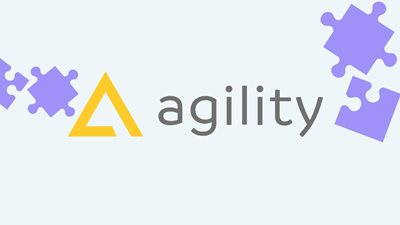Future Proofing Your Business With Decoupled Architecture
How the main characteristics and advantages of decoupled design can strengthen your business


Forecasting is trying to predict what will happen in the future, and future-proofing is making changes now and getting ready for that new situation.
In recent years, some firms have been forced to change their business models altogether, whereas many others are using this crisis as an opportunity to implement a Digital Transformation.The future of your business depends on how well you can connect with your customers and how fast you can change with their evolving needs.
What is Decoupled architecture?
As the name suggests, it separates the backend content creation and storage from the front-end content presentation and consumption. In traditional architecture, these two sections are tightly connected. Decoupling helps to innovate, make changes faster, and provide better user experiences.
Let us see how the main characteristics and advantages of Decoupled design can help your business come out of this crisis stronger.
Crafted User Experiences
Customers spend vast amounts of time online streaming videos, playing games, group chats, online classes etc. Creating valuable User experiences and providing Personalization at scale is one of the effective ways a business can retain and grow its customer base in this scenario. The decoupled architecture allows the design of components that can provide unique user experience features.
Consider weather.com, which uses a decoupled structure to organize the massive amount of daily data from across the globe and present it in easily understandable visual formats.
For example, connecting Agility CMS with Gatsby can help combine the benefits of an open-source system with the latest enterprise-level features.
Decoupling will help your business with omnichannel delivery, and the customers will have a smooth and seamless experience through multiple channels like Website, mobile, IoT devices, Apps etc.
Staying Agile
We live in uncertain times, and your survival and success depend on how fast you can change your strategy as the market changes. Your performance speed is directionally proportional to customer engagement, a vital parameter that can drive loyalty and profitability.
In Decoupled architecture, time for developing and testing is minimal because the front-end and backend tasks happen simultaneously. The content repository is a hub that can be connected to numerous delivery channels. Easier third-party integrations help in faster collaborations and change management.
The time needed to upgrade the system and make changes is less due to the lean codes and faster loading. It means the normal functioning of the business doesn't get affected by these efforts.
Innovation Management
The main attributes of successful organizations today are their ability to think creatively and implement ideas faster because new technologies and products are flooding the market. Research done on federal systems by Accenture showed that decoupling could help to innovate and unlock the IT value of systems.
Decoupling makes use of modularity and reduces the sophistication of the overall architecture. Earlier, a developer needed to know the business logic, overall architecture, and dependencies between segments. In a decoupled setting, he can use his core skills to build his expertise area without worrying about other connected technologies. This will help in reducing the innovation cycle time.
Centralized control
Companies are dealing with ever-growing quantities of content, and the challenge is to avoid redundancy, inefficiency, and inconsistencies in storage and usage.
Decoupled architecture follows the principle of COPE - Create once, Publish everywhere.
It is designed so that admins can have an overview from a vantage point, and it is easier to manage users and control their rights. The time and human resources needed to manage the entire system are significantly less. The centralized control helps you execute multiple campaigns through different channels efficiently.
Security
During the current crisis, we are witnessing increased phishing and social engineering cyberattacks. A content management system will have different types of users like content creators, editors, and admins with varying levels of access rights. It can present vulnerabilities and result in mistakes that cybercriminals can exploit.
The decoupled architecture ensures that content creation and organizing happens smoothly and efficiently at the back end. At the same time, the front end can collaborate and use the best security tools and applications available in the market. Modular nature makes incorporating security from the early design stages easier.
Conclusion
The current crisis is forcing every business to have a fresh look at its business models and processes. Many are utilizing this as an opportunity to implement the following step transformation process, which was long overdue. Shifting to decoupled architecture can be a significant factor that can help your business stay ahead of the competition amid uncertainties.
As they say, adaptability is the most vital attribute when it comes to survival.

About the Author
Sujit Kumar is Director of Strategy & Marketing at Valuebound. Sujit oversees all aspects of lead generation, company and brand promotion and sales activity. He brings nearly 15+ years of marketing experience, strategic thinking, creativity, and operational effectiveness and campaign execution. He has a bachelor’s degree from the IIT Roorkee and an MBA with a specialization in marketing from IIM Kozhikode.

How to Persuade the C-Suite on Headless CMS

Agility CMS Composable Offerings

Agility CMS Releases New Apps SDK to Help Customers Create Composable DXP
Build what you want, how you want it
We know you just want to build cool stuff. That’s why we designed Agility to give you all of the flexibility and features you need to turn your vision into reality. Whether it’s developing with today’s latest web technologies (or tomorrow’s), Agility makes it easy to stay on the cutting edge.
Try Now